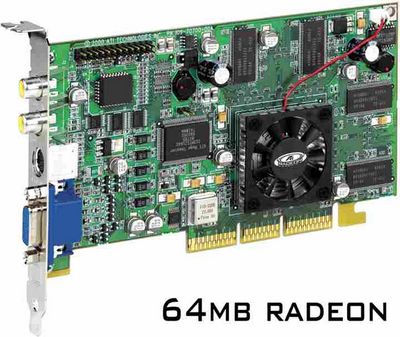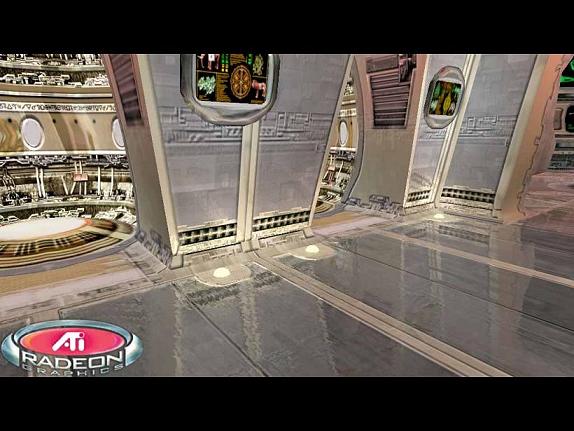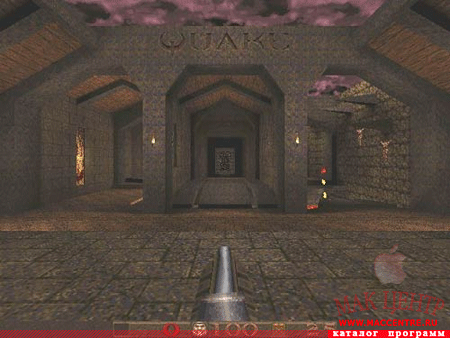Radeon DDR

A new chip from ATI was announced in May 2000. During this time, motherboards based on NVIDIA GeForce2 GTS have already fallen in price, so it was not so easy for ATI's new products to take their rightful place on the market.
New features of 3-D graphics that were implemented in the new chip:
Geometric engine Charisma Engine - hardware implementation of coordinate transformation, lighting setting, clipping (clipping polygons not included in the final frame), vertex skinning, keyframe interpolation (interpolation between keyframes), perspective devide, triangle setup Support for up to four skinning matrices used
for polygon vertex interpolation (vertex blending)
HW TCL performance: 30 million textured polygons per second (peak)
Hardware installation of 8 lights for the entire scene (directional aka infinite and point Lights aka local)
Full support for OpenGL and DX7 - Tranform & Lighting, Cube environment mapping (cubic texturing by environment maps), projective textures (projection of textures) and texture compression
Pixel Tapestry rendering engine that allows the use of three texture units per pixel rendering pipeline
The following texture mapping methods are supported: Cubic, Spherical and Dual-Paraboloid
Rendering at 16 and 32 bit color depth
Hardware support for bump texturing of the following types: Embosing, Dot Product3, EMBM
Supported textures up to 2048x2048 @ 32 bit
Programmable multiple texture blending modes
3D textures are supported, this allows you to reproduce volumetric effects, such as fog or a dynamically changing light source, such as a fire in a fireplace
Supports the implementation of hardware effects such as Motion Blur, Depth of Field, smoothing the entire scene FSAA), etc. via D3D8
Template buffer (stencil): 8 bit
Z-buffer: 16/24/32 bit
Shading for each individual light source, for this purpose a special Priority Buffer is implemented in the chip
Full support for Direct3D lighting model
Support for table and vertex fog
Structural diagram of the video card:

Video:
Supports hardware decoding of all HDTV formats
Supports all ATSC resolutions, including 1080i
Supports YPrPb format for direct connection of HDTV displays
Supports Adaptive de-interlacing technology - ATI's unique technology that allows you to play high-definition video without artifacts or blur
Supports 8-bit alpha mode for mixing video and graphics (for example, this is used for superimposing subtitles or animated menus)
Fully compatible with ATI's Rage Theater companion chip.
Charisma Engine
The geometry engine Charisma Engine had the following features: Hardware support for setting vertex lighting. It is expected that when using more than one Directional Lights (directional lighting, aka Infinite; in this case, the light source is treated as a point located at an infinite distance from visible objects in the scene), the performance drop will be less significant compared to GeForce256. Hardware conversion of polygon vertex coordinates from 3D coordinates of the simulated scene to 2D monitor screen coordinates, taking into account distance correction, the so-called. perspective transformation operation. At the hardware level, the clipping process of polygons invisible in the final scene is supported - Clipping.
Vertex Skinning
This is a method of correct transformation of the vertices of the geometric mesh in the places of the model fold, i.e. work is only with geometry, not with textures. Textures on correctly transformed geometry will stretch correctly. In order for the geometry to be transformed correctly, especially on folds and joints (for example, all joints when modeling the human body), the vertex skinning technique (single-skin effect) is used. Note that vertex skinning is a subset of the vertex blending method. Essentially, vertex blending is like alpha blending, only for vertices, not for pixels (V = V1*alpha + V2*(1-alpha)). The vertex skinning method is vertex blending for vertices treated with different matrices (V = V1*M1*alpha + V2*M2*(1-alpha)). We emphasize that the correctness of texture mapping on the folds is a consequence of the correct location of the vertices, which is achieved with the help of vertex skinning. Vertex Skinning is used to ensure smooth, natural transitions at the junctions of textures, especially during movement. Vertices are interpolated using matrices called Skinning Matrices
Keyframe Interpolation
Keyframe interpolation allows you to change the appearance of the displayed object at the hardware level by specifying only the initial image, the final image and key intermediate frames, all other transformations are performed automatically. In other words, the Charisma Engine inserts the required number of interpolated frames between the "key" frames, and as a result, for example, it is quite easy to implement a change in facial expressions on the face of a game character.
Pixel Tapestry
In addition to the ability to hardware-accelerate the geometric stage when rendering an image, the RADEON, of course, was able to hardware-accelerate the rasterization stage. It is for this purpose that the pixel rendering architecture and the engine of the same name, Pixel Tapestry, were created. This rendering engine is built into the RADEON and was specifically designed to implement the operation of three texture units on each of the available rendering pipelines. The RADEON has two rendering pipelines, each of which has three texturing units. This allows you to:
mix and filter up to three textures per pixel without loss in speed
implement various methods of texture transformation in hardware (cubic environment mapping, projective texturing, etc.)
implement single-pass bump texture mapping using Emboss, Dot Product 3 and Environment Mapped Bump Mapping (EMBM) methods
accurately simulate the reflective properties of materials (water, metal, wood, etc.)
In addition, support was implemented using the Pixel Tapestry engine:
Priority Buffer, which is used to apply realistic shadow mapping shadows from individual light sources
3D Textures (three-dimensional textures), which allows you to create complex, dynamic light sources, as well as volumetric fog, smoke, fluid and simplifies the handling of variable geometry objects.

HyperZ
HyperZ works on a tile basis, i.e. on the basis of splitting the screen into square fragments. RADEON draws the polygon first in the normal order, then in the tile order, and if the tile completely covers the polygon, then it is discarded and excluded from further processing. This is a simple but very effective trick, as most 3D games play out in scenes containing walls, ceilings, etc. , this approach saves up to 20% of rendering time.
ATI Radeon DDR Specifications
| Name | Radeon DDR |
| Core | R100 |
| Process technology (µm) | 0.18 |
| Transistors (million) | thirty |
| Core frequency | 183 |
| Memory frequency (DDR) | 183 (366) |
| Bus and memory type | DDR-128bit |
| Bandwidth (Gb/s) | 2.9 |
| Pixel pipelines | 2 |
| TMU per conveyor | 3 |
| textures per clock | 6 |
| textures per pass | 3 |
| Vertex conveyors | No |
| Pixel Shaders | 0.5 (emulation) |
| Vertex Shaders | 1.0 (emulation) |
| Fill Rate (Mpix/s) | 366 |
| Fill Rate (Mtex/s) | 1098 |
| DirectX | 7.0 |
| Anti-Aliasing (Max) | ? |
| Anisotropic Filtering (Max) | 16x |
| Memory | 32 / 64 MB |
| Interface | AGP4x |
| RAMDAC | 360MHz |
2.5 months after the release of video cards based on NVIDIA GeForce2 GTS, ATI hit back. Its new offspring with the strange name RADEON unceremoniously violated the sovereignty of NVIDIA products, and the GeForce2 GTS fell off the throne of the leader in 3D graphics at 32-bit color.
Quake




